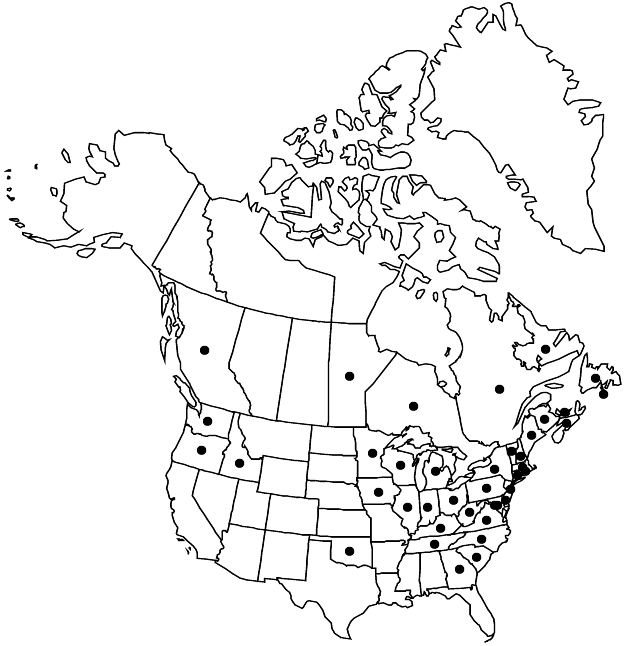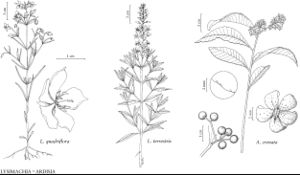Difference between revisions of "Lysimachia terrestris"
Prelim. Cat., 34. 1888,.
FNA>Volume Importer |
FNA>Volume Importer |
Revision as of 20:30, 24 September 2019
Stems erect, simple or branched, 2.5–10 dm, glabrous; rhizomes thickened; elongate bulblets developing in distal axils in late season. Leaves usually opposite or subopposite (rarely alternate); petiole absent or 0.1–1 cm, eciliolate; blade elliptic-lanceolate to lanceolate, 3–10 × 0.5–2 cm, base cuneate, decurrent, margins entire, slightly revolute, eciliolate, apex acute to acuminate, surfaces punctate, glabrous; venation single-veined to obscurely pinnate. Inflorescences terminal, racemes, 10–30 cm. Pedicels 0.5–2 cm, glabrous. Flowers: sepals 5, calyx streaked with black resin canals, 2–6 mm, minutely stipitate-glandular on margins (or glabrous), lobes ovate to lanceolate, margins thin; petals 5, corolla yellow with reddish base, streaked with black or maroon resin canals, rotate, 5–7.8 mm, lobes with margins entire, apex acute to rounded, stipitate-glandular adaxially; filaments connate 0.4–1 mm, shorter than corolla; staminodes absent. Capsules 3–3.5 mm, dark-punctate, glabrous. 2n = 84.
Phenology: Flowering summer.
Habitat: Swamps, flood plains, fens, bogs, stream banks, pond and lake margins, wet ditches, other similar habitats
Elevation: 0-1000 m
Distribution

St. Pierre and Miquelon, B.C., Man., N.B., Nfld. and Labr., N.S., Ont., P.E.I., Que., Conn., Del., D.C., Ga., Idaho, Ill., Ind., Iowa, Ky., Maine, Md., Mass., Mich., Minn., N.H., N.J., N.Y., N.C., Ohio, Okla., Oreg., Pa., R.I., S.C., Tenn., Vt., Va., Wash., W.Va., Wis.
Discussion
Lysimachia terrestris has been introduced in cranberry bogs and is occasionally found on muddy lake shores of the Pacific Northwest (British Columbia, Oregon, Washington).
A fairly widespread hybrid between Lysimachia terrestris and L. thyrsiflora has been widely reported and named L. ×commixta Fernald. The parents may or may not be found in the vicinity of hybrid populations, which can form extensive colonies through vegetative reproduction of rhizomes or bulblets. J. D. Ray (1956) indicated that the hybrids are “relatively infertile,” with abnormal pollen grains.
Selected References
None.
